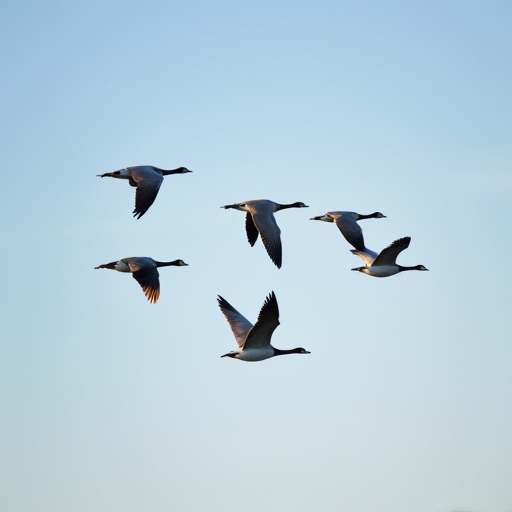
Why Do Geese Fly in a V Formation?
The sight of geese flying in a V formation is a familiar one, especially during the migratory seasons in the spring and fall. This distinctive pattern has intrigued scientists and bird watchers for years. But why exactly do geese, and other migratory birds, choose to fly in such an arrangement? The reasons behind this behavior are rooted in aerodynamics, energy conservation, communication, and social bonding.
Aerodynamic Advantage
The primary reason geese fly in a V formation is to take advantage of aerodynamic principles. When a bird flaps its wings, it creates an uplift of air behind it. This uplift, known as a vortex, provides additional lift to the bird immediately behind. By flying in a V formation, each bird, except for the leader, can benefit from the upwash created by the bird in front of them. This dynamic reduces air resistance for the trailing birds, allowing them to conserve energy during long migratory flights.
Energy Conservation
Studies have shown that birds flying in a V formation can save up to 20-30% of their energy compared to flying alone. This energy conservation is crucial, as migratory journeys can span thousands of miles, requiring significant endurance and stamina. By sharing the effort of leading the formation, geese can take turns being the lead bird, which bears the most energy expenditure due to the absence of aerodynamic advantage. This rotation ensures that no single bird is overly fatigued, optimizing the group's overall efficiency during migration.
Improved Communication and Coordination
Flying in a V formation also enhances communication and coordination among the group. The arrangement allows each bird to maintain visual contact with others, making it easier to coordinate movements and navigate as a cohesive unit. This visual line of sight is essential for maintaining the structure of the V, adjusting for any changes in wind patterns, and avoiding mid-air collisions.
Navigational Aid
Geese are known for their impressive navigational skills, often traveling vast distances between breeding and wintering grounds. The V formation helps in maintaining a steady course, as birds can easily correct their positions relative to their neighbors, ensuring the flock remains on the intended migratory path. The leader at the front of the formation plays a crucial role in navigation, often guided by a combination of innate instincts, environmental cues, and learned behavior.
Social Bonding and Protection
In addition to the practical benefits, flying in a V formation may also strengthen social bonds among the birds. Geese are social animals, and maintaining a tight formation can reinforce group cohesion. This social structure is essential for their survival, as it supports collective decision-making and mutual protection.
Predator Evasion
A well-organized V formation can also aid in predator evasion. By flying together, geese can present a united front, making it more challenging for predators to single out and target an individual bird. The formation can also allow for quick, coordinated maneuvers to evade threats during flight.
Conclusion
The V formation is a striking example of how animals have evolved strategies to enhance survival and efficiency. For geese, this formation provides significant aerodynamic benefits, energy savings, and improved communication, all of which are vital during their long migratory journeys. Furthermore, the V formation fosters social bonds and offers protection against predators, underscoring the complex interplay between individual behavior and group dynamics in the natural world.
As we continue to study and appreciate the intricacies of animal behavior, the sight of geese flying in a V formation remains a testament to the wonders of nature and the remarkable adaptations of migratory birds.
